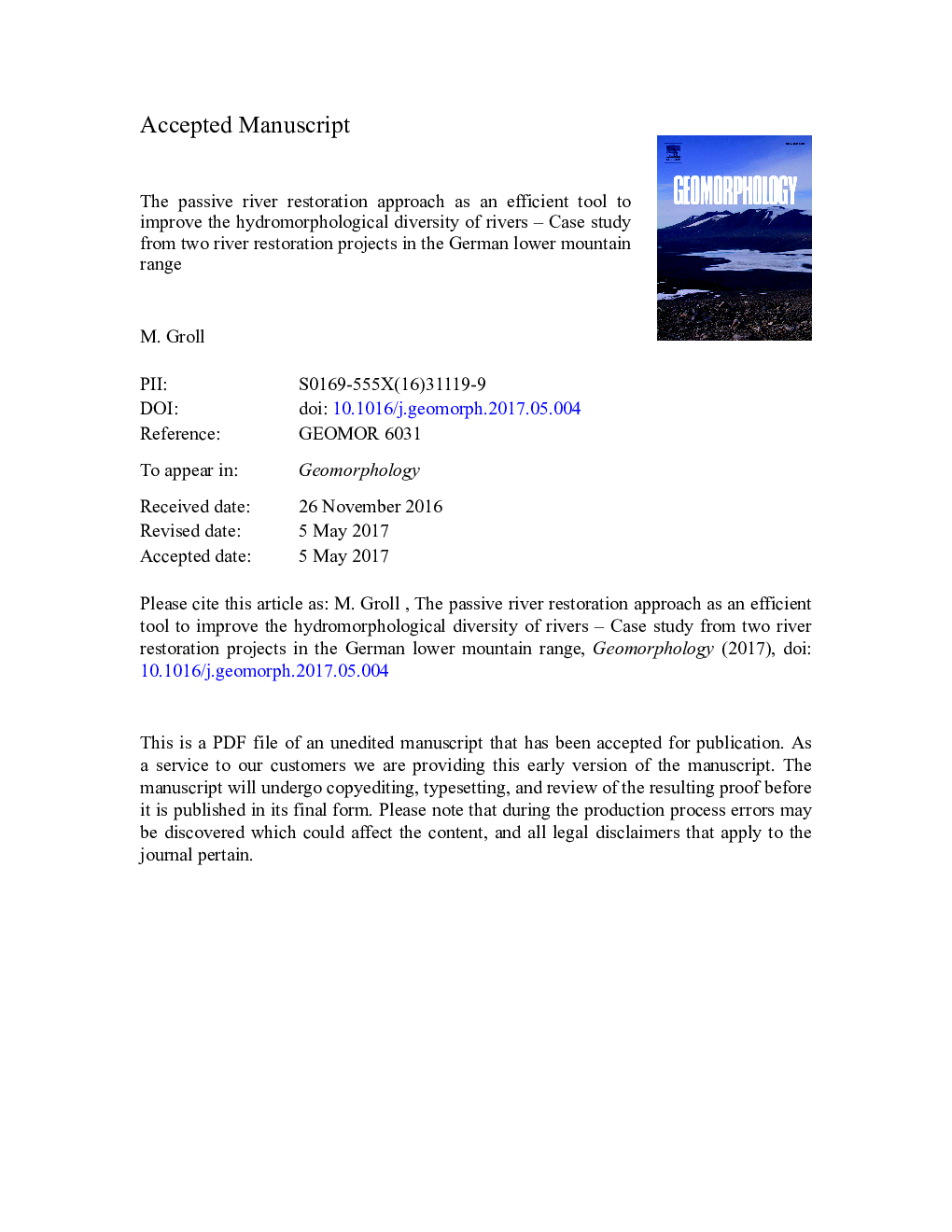| کد مقاله | کد نشریه | سال انتشار | مقاله انگلیسی | نسخه تمام متن |
|---|---|---|---|---|
| 5780840 | 1413842 | 2017 | 49 صفحه PDF | دانلود رایگان |
عنوان انگلیسی مقاله ISI
The passive river restoration approach as an efficient tool to improve the hydromorphological diversity of rivers - Case study from two river restoration projects in the German lower mountain range
ترجمه فارسی عنوان
رویکرد بازسازی رودخانه غیر فعال به عنوان یک ابزار کارآمد برای بهبود تنوع هیدرومورفولوژیکی رودخانه ها - مطالعه موردی از دو پروژه بازسازی رودخانه در دامنه کوهی پایین آلمان
دانلود مقاله + سفارش ترجمه
دانلود مقاله ISI انگلیسی
رایگان برای ایرانیان
کلمات کلیدی
دستورالعمل چارچوب آب، بوم شناسی آب شیرین، ترمیم رودخانه، ژئومورفولوژی، رسوبات، بسترها، مورفولوژی فلوی،
موضوعات مرتبط
مهندسی و علوم پایه
علوم زمین و سیارات
فرآیندهای سطح زمین
چکیده انگلیسی
Intensive use of European rivers during the last hundreds of years has led to profound changes in the physicochemical properties, river morphology, and aquatic faunistic communities. Rectifying these changes and improving the ecological state of all surface water bodies is the central aim of the European Water Frame Directive (WFD), and river restoration measures are the main tool to achieve this goal for many rivers. As the cost-effectiveness of all measures is crucial to the WFD implementation, the approach of the passive river restoration has become very popular over the last decades. But while costs of this approach are minimal, not much is known about the long-term effectiveness of passive river restorations. The research presented here provides essential and in-depth data about the effects of two such restoration measures on the riverbed morphology of a large river of the lower mountain region in Germany (type 9.2). More than 3200 data sets were acquired using the TRiSHa method (Typology of Riverbed Structures and Habitats). The results show a high spatial and temporal diversity and dynamic for all analyzed hydromorphologic parameters - ranging from riverbed sediments, organic structures like dead wood or macrophytes, to the distribution of 32 microhabitat types. The structures and their dynamic depend on the character of the study area (free-flowing or impounded), the location of the study sites within the research area (main channel or restored side channel), and on the occurrence of major flood events (the mapping and sampling were conducted annually from 2006 to 2008 with a 50-year flood event occurring in early 2007). These results show the potential of the passive restoration approach for creating morphologically diverse riverbeds, as habitat diversity and the spatial heterogeneity of the riverbed substrates increased significantly (e.g., more than 40% of all habitat types were only detected in the newly restored side channels). But the results also show the limitations of the passive restoration approach, as impounded river sections do not develop as rapidly as their free-flowing counterparts as more than 78% of the restored riverbed in an impounded river stretch remained completely unchanged - even by the 50-year flood event. These differences have to be taken into consideration when formulating the expectations of any passive river restoration.
ناشر
Database: Elsevier - ScienceDirect (ساینس دایرکت)
Journal: Geomorphology - Volume 293, Part A, 15 September 2017, Pages 69-83
Journal: Geomorphology - Volume 293, Part A, 15 September 2017, Pages 69-83
نویسندگان
M. Groll,
